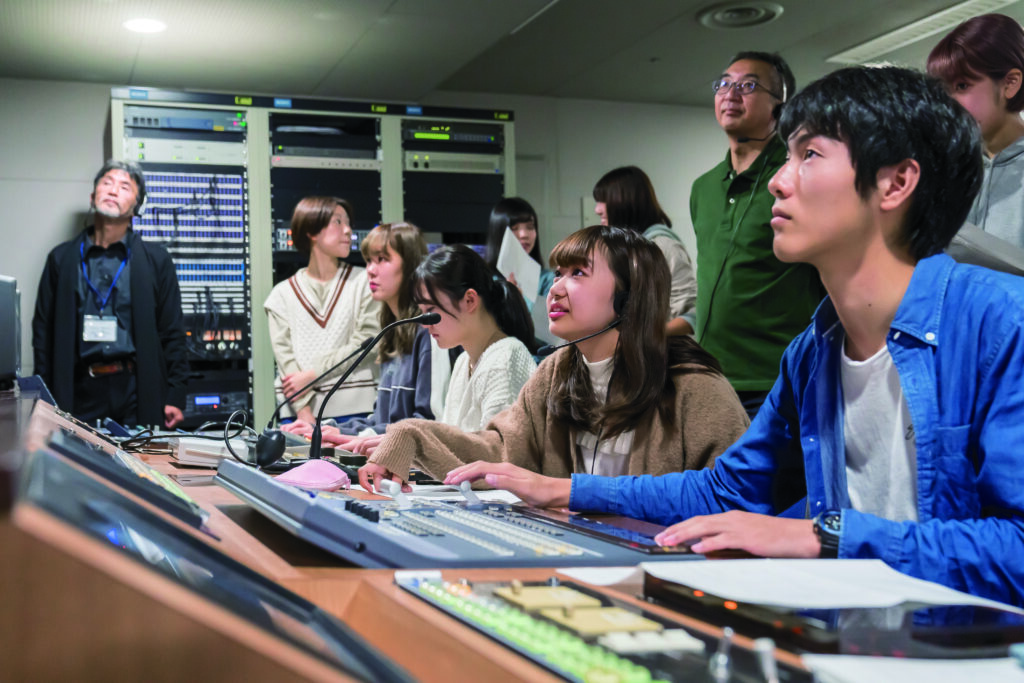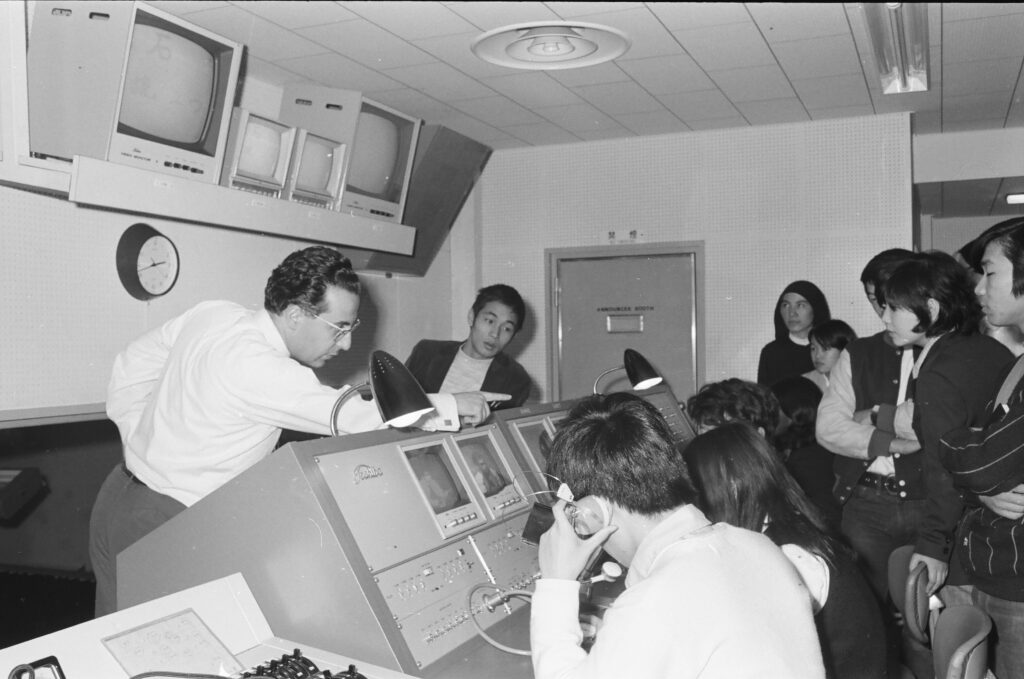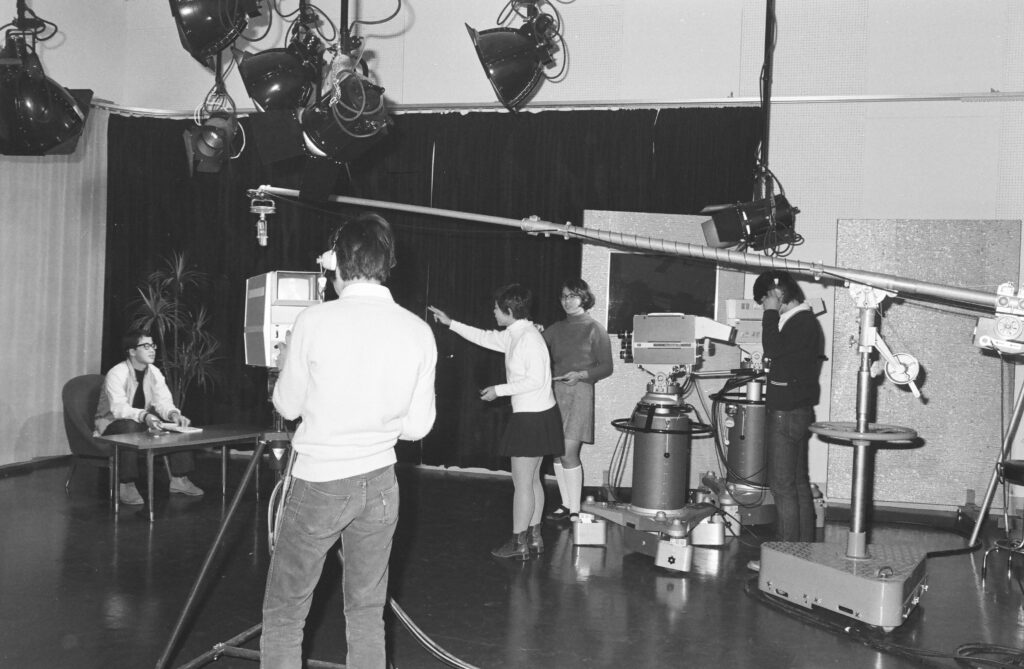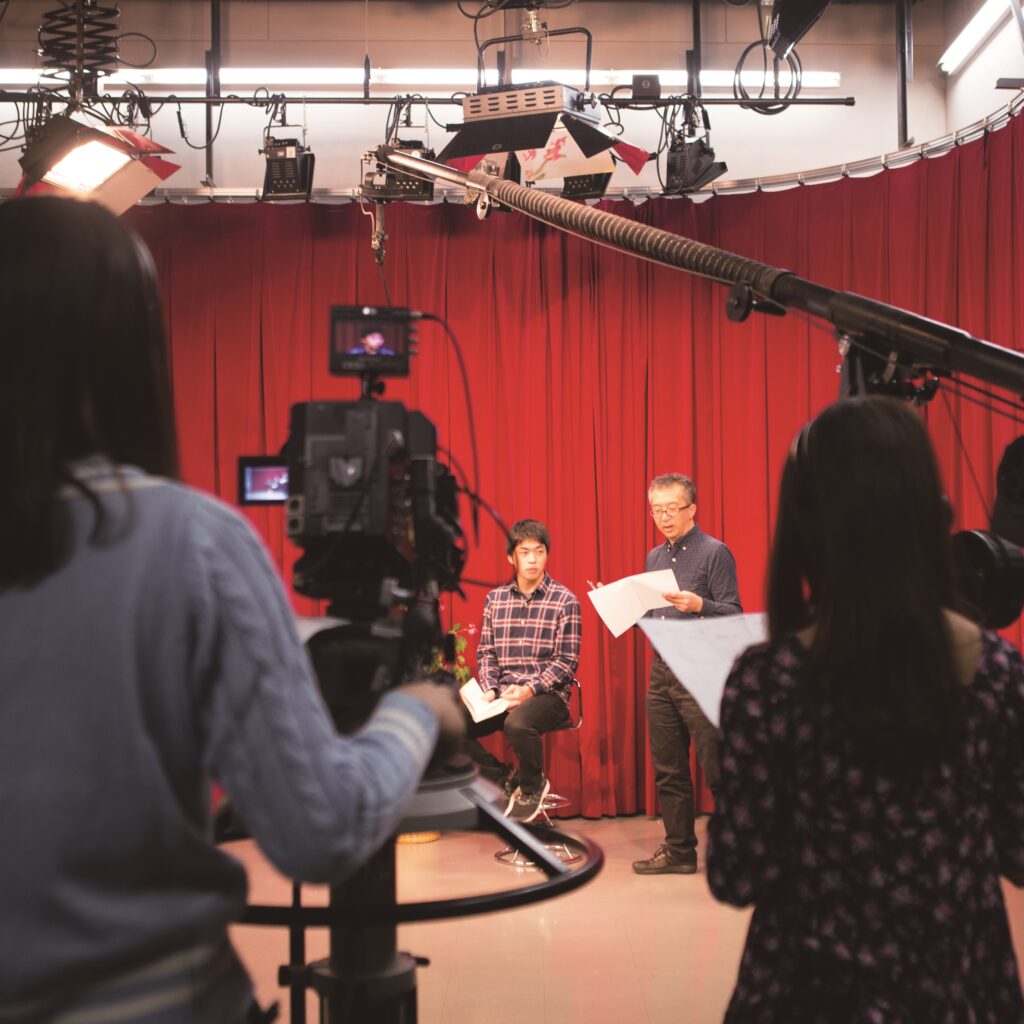The tension in the air is just like an actual recording at a television studio. However, the people rolling the camera, reading the script, and operating the mixing desk are all students. Did you know that Sophia University has a TV studio? It was established more than 55 years ago in 1966. Here we introduce the TV Center, a facility that covers everything from the production to broadcast of TV programs.
Sending Graduates into the Mass Media Industry
More than 30% of all Sophia University students who graduated in the 2021 academic year found employment in the mass media industry, including in the broadcasting, publishing, and newspaper fields, and almost 20% of these students graduated from the Faculty of Humanities’ Department of Journalism (*1) . One of the most popular classes out of the experience-based classes held as part of Sophia University’s Open Campus were the trial classes at the Department of Journalism’s TV Center. These classes were titled “Considering TV media by creating a program” and “Experience broadcasting! What is a TV program production class?” (*2). There was probably no shortage of students who decided to enroll at Sophia University because of the open campus event and experience-based classes. Also, since 2016, many students who have made documentaries in the seminar taught by the Department of Journalism’s Professor Hiroaki Mizushima have won awards for their work at the Tokyo Video Festival and other film festivals.

TV Research at the University
One of the driving forces behind research into TV at Sophia University was Father Pedro Arrupe (the Society of Jesus’ head of Japan Province from 1958 to 1965, and the 28th superior general of the Society of Jesus from 1965 to 1983). Father Arrupe predicted that TV would play an important role within journalism.
At that time, Father Jose Maria de Vera (1928-2019) had acquired a master’s degree in Theology at Sophia University, and following the directions of Father Arrupe, he travelled to the University of Michigan in the U.S. to continue research on the theme of educational television in Japan, while also directing the establishment of the TV Center as a member of Sophia University’s teaching staff. (*3)
The Establishment of Sophia University’s TV Center
As a result, Sophia University’s TV Center was founded in April 1966 with the aim of providing all students with education and services using equipment for filming and editing TV programs, as well as functioning as a facility for research into society and TV journalism. At the time, the establishment of this kind of facility at a university was groundbreaking, and the curriculum, which used the facility for creating TV programs, played a pioneering role within Japanese university education(*4). Father de Vera reminisced, “There were very few universities with that kind of facility at the time, so many professors from other universities came to observe the TV Center. The students were also very excited to take lessons there.” (*5). Father de Vera also served as director of the TV Center, and he said in a Sophia University Newspaper (No. 12, November 1, 1966) article under the headline “Research Lab. Guide: TV Center,” “I want students to cultivate practical abilities and to experience the joy of creation by making actual TV programs, as well as to grow as people through group activity.”


Upgrading and Adapting to Changes in the Times
When it first opened, the TV Center started as a temporary studio formed out of two classrooms on the fifth floor of Building No. 3, but three years later, in 1969, it was reborn as a full-scale facility occupying the first and first basement floors of the former Building No. 6. The first basement floor housed rooms such as the control room and presenters’ room, while the first floor housed the studio, meeting rooms, make-up rooms, and the like.
In 2002, the facility was completely upgraded to keep pace with digitalization. The current Building No. 2 was completed in 2005, and the TV Center was moved into the first and second basement floors of the new building. The studio on the second basement floor includes an atrium so that filming can be carried out while being viewed from the control room on the first basement floor. In 2009, equipment for high definition (HD) filming and editing was installed in response to the switch from terrestrial to digital broadcasting. Studio systems, peripherals, editing equipment, location equipment, and other equipment were also upgraded to be compatible with digital HD. The introduction of seven non-linear editing devices enabled editing to be carried out by computer. In 2016, the editing system was expanded from five to 11 devices and a new editing room was installed, along with 4K cameras and 4K TVs. In 2017, further upgrades were made, including to editing equipment and audio equipment (presenter’s booth). The studio’s lighting equipment is going to be switched to LED in March 2023.
Over more than 55 years, Sophia University’s TV Center has continuously evolved with the times and in addition to being used in TV production classes in the Department of Journalism, it also continues to be used for audio-visual education classes in the Curator Certification program.
(*1) Survey by the Career Center (as of November 8, 2022)
(*2) In the 2020 academic year, Open Campus events were suspended due to the COVID-19 pandemic. Also, experience-based classes using the TV Center were not held in the Open Campus for the 2022 academic year.
(*3) From an email sent in April 2013 by Father de Vera, who was residing in Spain at the time
(*4) From the ICT Office website (viewed on November 17, 2022)
(*5) From an email sent in April 2013 by Father de Vera, who was residing in Spain at the time
